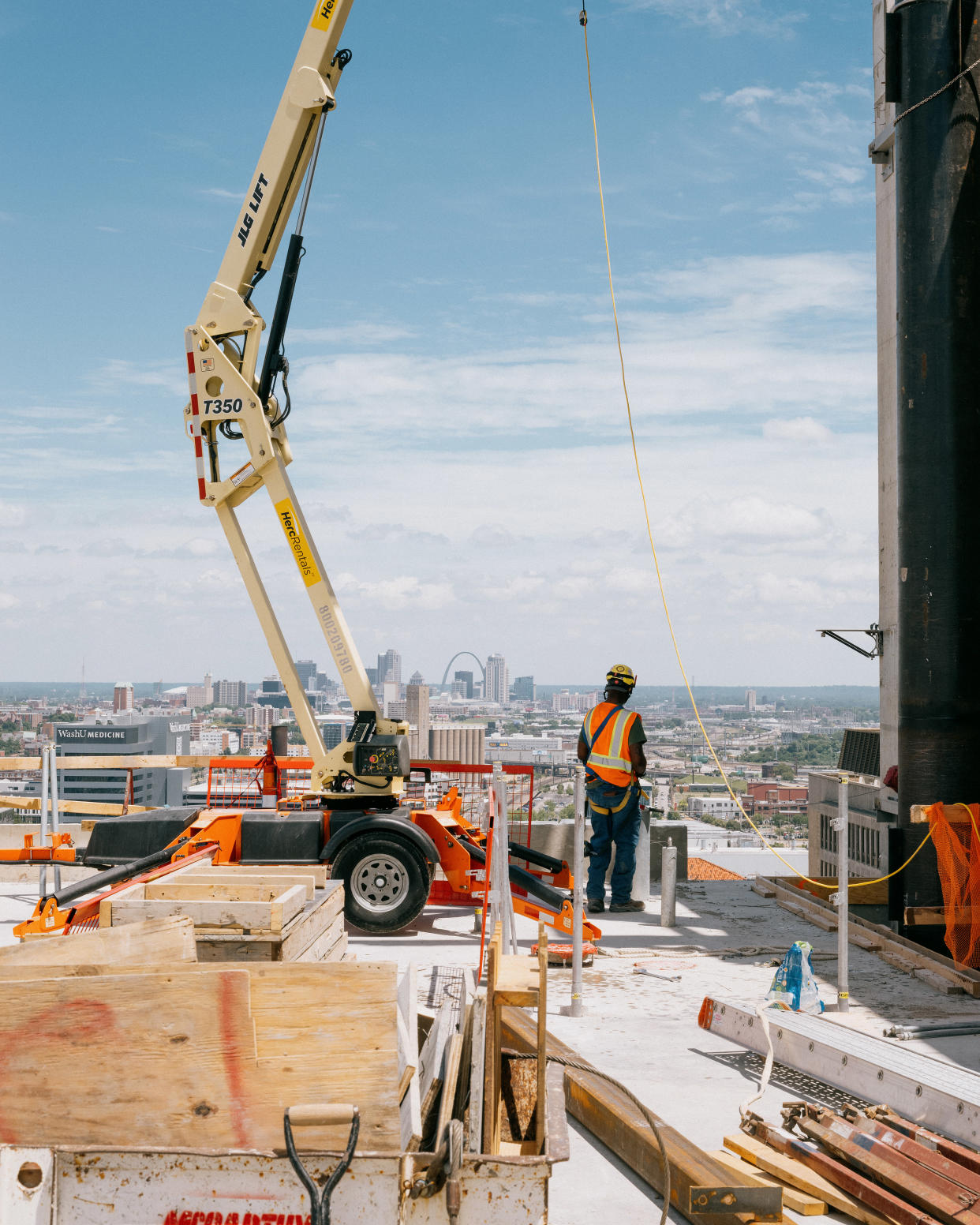But It’s Only June: An Early Blast of Heat Grips Much of the U.S.

CHICAGO — Larry White was thrown a little off-kilter by the soupy, 93-degree temperature in Chicago on Monday morning. It’s only mid-June, he said with annoyance, and until this week he barely needed the air-conditioning in his high-rise apartment on the city’s North Side. When he stopped at McDonald’s, he ordered a large hot coffee out of habit.
“What am I doing with this?” White said. He studied the skin on his forearm, already glistening with sweat. “Barely starting the day and I’m getting burned.”
A heat wave that is expected to punish much of the country before week’s end enveloped the Midwest, leaving the region scorched and sweltering.
Sign up for The Morning newsletter from the New York Times
In Chicago, beaches were packed by midmorning, and in a stroke of good luck, Monday was the first day that hundreds of city pools, water playgrounds and splash pads opened for the summer.
While a Midwestern heat wave in mid-June is not unprecedented, this one is striking in its duration, said Jake Petr, the lead forecaster with National Weather Service Chicago, and may augur another brutal summer. Most of the country is expected to see temperatures higher than usual for the next three to four weeks, forecasters said.
The heat is moving quickly to the Northeast. Meteorologists said the temperatures would peak on Thursday or Friday, with heat indexes exceeding 100 degrees in New Jersey, Pennsylvania, New York and Connecticut.
Chicago and Cook County designated cooling centers throughout the region in existing senior centers, libraries and athletic facilities, giving the more than 5 million residents of Cook County a place to rest if they had nowhere to go.
Typically it takes an excessive heat warning from the National Weather Service for the city to open cooling centers, said Brian Berg, a spokesperson for the Chicago Department of Family and Support Services. “But we didn’t wait for that this time,” he said. “We feel it’s quite uncomfortable, and we want everybody to be safe.”
Across the Midwest, people who work outdoors had to adapt to the relatively early blast of heat, which meteorologists said could stretch for days. In Davenport, Iowa, the temperature reached 93 degrees; in Peoria, Illinois, 95 degrees.
Jasen Moore, 42, who works outside all day in and around Milwaukee locating utility lines, was dressed in a yellow reflective sun hat, yellow T-shirt and jeans.
“If you start feeling dizzy or you’re wobbly in the legs, take a break, go to the truck, turn on the AC,” he said, adding that he drinks about five bottles of water daily. “Take a little time off, then get back to it.”
In Cedar Rapids, Iowa, where high temperatures and humidity were expected to last well into the week, a construction crew building a new dental office had steeled themselves for the intense heat.
Most of the workers were covered head-to-toe to protect against the sun, but Colin Thompson, 32, a redhead with fair skin, braved the heat with a sleeveless T-shirt.
“I use a lot of sunscreen,” he said. “And we get in the shade whenever we can.”
The crew began its day at 7:30 a.m. local time, when temperatures are cooler, Thompson said. They take lunch at midday, “so you’re not outside at the hottest part.”
Some people in Iowa said they saw the early heat wave as only the most recent example of shifting, more extreme weather. As humans continue adding greenhouse gases to the atmosphere by burning fossil fuels, experts say, record-breaking heat will become even more common, as will extreme weather events such as droughts, wildfires and floods.
Roger Schantz, 75, a retired shop teacher, said it had been unusually hot early this year and unusually humid. His brother, Dean Schantz, said that recent rainstorms were extremely heavy, with storms popping up “quicker and bigger.”
“I haven’t seen any migratory butterflies this summer or hummingbirds. I think it’s just too hot,” he said.
Using crops as barometers, he added: “The saying is that corn is supposed to be knee-high by July 4, but it is already higher than that.”
The Detroit area was under an excessive heat warning on Monday, and Bruce Moore, a 70-year-old retiree, was avoiding direct sun in Palmer Park as temperatures neared 100 degrees.
Fifty years of playing tennis helped him acclimate to humid weather, he said. But he is used to Michigan’s hottest stretches happening in July or August, not mid-June.
Practicing his serve on the tennis court would have to wait until early evening. “I have water in the car and I’m staying in the shade,” he said.
The weather service in Chicago predicted that high temperatures and muggy conditions could continue throughout the week. By midday Monday the heat index — a measure of how the temperature feels with the humidity — had already hit 102 degrees in Cincinnati and 95 in Chicago.
Residents of Chicago were inundated with warnings about the weather and its dangers. Matt Martin, a member of Chicago City Council from the North Side, sent an email to constituents reminding them to check on vulnerable relatives, to stay indoors if possible and to avoid alcoholic beverages. In a neighborhood Facebook group, a dog walker advised dog owners to press their own palms against the sidewalk to test whether it was too hot for little paws.
Not everyone saw a problem with the heat.
Angel Ayala, 67, left his apartment a few blocks from Lake Michigan with a Chicago Bulls cap pulled low to shield his face from the sun as he waited for an Uber. He didn’t have air-conditioning, he said, but it wasn’t strictly necessary.
Ayala, a native of New York City, said that Chicago weather was easy to handle. “I’ve got the ceiling fan and a little round fan, and I’m used to it,” he said. “We’ve got the lake.”
c.2024 The New York Times Company

